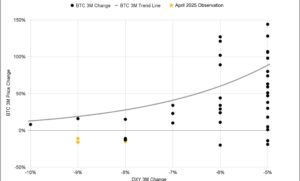A Beginner’s Guide to Ripple

For many people out there, Ripple is merely a cryptocurrency, and nothing more, but that is not the case because it is the most subtle and cohesive blockchain out there. Sure Ripple endorses and uses the XRP ledger from time to time for various dedicated reasons. But its business, technology, and overall ecosystem are not entirely relevant and or dependent on the XRP token. Like every other blockchain out there, Ripple is also trying to solve something may it be complex mathematical equations like Bitcoin and Ether are trying to do or having to streamline the process of sending and receiving money.
With the progress of technology, certain things and aspects of life have been revolutionized, such as sending an email or receiving text messages. All of that happens in the blink of an eye. But the transfer of money from one place to another distant place is still extremely complicated and, without any doubt, a bit jumbled. Cryptocurrency generally has provided a lot of help in that sector because it helps people to transfer money in the form of crypto from one place to another in bulk.
The money transferred uses the most secure transfer channel there is, which the blockchain technology itself is. Ripple, being a blockchain technology itself, is trying to help straighten out the process of money transfer and make it as efficient and fast as possible. There is one thing that is worth noting here, and it is the fact that both XRP and Ripple are independent in their own doing, and they rely little on each other. The Ledger, which is XRP and the XRP token, is completely independent of the Ripple Company, and this information was brought further by the Ripple Company itself over the years.
A Brief History of Ripple
RipplePay was the payment mediator platform developed by Ryan Fugger, a software developer, in 2004. But later on, various transitions were made within the system, which has resulted in the development of the Ripple Company as we know it today. The initial development team on Ripple was looking into developing a system that is faster when it comes to sending/receding crypto and outside of the crucial working chain model of Bitcoin back in 2009 when bitcoin went live. Later on, after extensive development, XRP came live in 2012 and has been around ever since.
Around 2017 the XRP token started to show some momentum as the token was already up to $0.05, and later on, in 2018, the token went all the way to $3, which was considered a significant win for the company but alas, this didn’t last for very long. As early as 2020, regulatory uncertainties developed in between the Ripple Company and the SEC, and that is where US operations of the Ripple took a serious beating as things have never been the same as SEC and Ripple are both battling it out in the court as the whole situation has turned into a massive lawsuit.
The very reason behind all of this is the newness of the crypto industry, as it has not made many strides over the years and is still a very fresh concept with a lot of regulatory clarification required. To determine the status of a dedicated crypto asset and for it to be classified either in terms of commodity or security has been the main topic of discussion these days as it has become extremely pivotal and important that this thing is taken care of as soon as possible.
The current lawsuit to which Ripple is battling it out with the Securities and Exchange Commission has made it paramount that other cryptocurrencies such as Bitcoin and Ether are classified into regular groups or categories for their better understanding in the future. The Commodity Futures Trading Commission currently considers both Bitcoin and Ether as commodities but even, so their classification as digital assets is not that clear.
When it came to Ripple, the Commission already assigned it into the securities category, and because of this, the whole case was submitted to the Securities and Exchange Commission, and therefore there is a lawsuit going on with no apparent end in sight. XRP is still struggling to square things out with the SEC and has argued multiple times that the jurisdiction and or decision of SEC came way later assigning it into the securities category because other regulatory agencies and commissions out there already cleared SEC a status other than that of security.
Areas of Business for Ripple
As long as the concept of money itself is considered, there has always been a need to transfer money from one place to another, and in the present financial system, banks use the Society for Worldwide Interbank Financial Telecommunication system for the sake of making international transactions possible. While processing of these international transactions is active but there is usually increased cost associated with the concept, and according to developers, an operational betterment could also be achieved if the whole task is being assigned to the new technologies that are the concept of blockchain technology itself.
Ripple has its own unique battle cry when it comes to the monetary framework that is currently in effect and operational worldwide. Ripple aims to make the transfer of money more transparent, cost-effective, and efficient. It wants the user to be able to send or receive money in real-time and not have to wait for the funds to clear in an international assembly which could possibly require hours, if not days.
There is this narrative that is built by Ripple and preached at various times, which is known as the Internet of value. According to Ripple, people should be able to transfer money as efficiently and quickly as they would with the information they currently carry on their devices.
As long as they are connected to the Internet, they can send this information out there in a matter of seconds, but when it comes to money, there are certain hurdles, it must be processed further, and it should be filtered through multiple channels to prove its authenticity and its origin, only then it is provided or made available to the intended recipient. Ripple wants to make this as easier and convenient as sending information via the Internet.
There are three different associations working for Ripple out there at first has the RippleNet, which is the main Ripple platform, the XRP Ledger, which is the blockchain of Ripple; and then there is the XRP coin and the RippleX. RippleNet is a dedicated platform that many financial institutions out there could use for the sake of transferring money from one place to another in a more opaque and transparent way. The system is extremely cost-effective, and it does make payments transfer from one place to another in a controlled and fast environment more secure than it ever could be.
All the transactions are secure with consistent encryption on all those which specify that no data of the transaction is being leaked or that any intruder could get through hands-on such delicate information. The platform uses only a single application programming interface, and that is about it. Ripple had many other financial products lined up out there but in 2019, it kind of combined all those solutions into the RippleNet.
The XRP Ledger, on the other hand, is an open-source blockchain system that is used to host the XRP token itself. XRP, in general confinement, is a native crypto asset of the XRP Ledger. Both the XRP Ledger and the coin are completely independent of the main Ripple platform, but it can use them for various solutions whenever the need presents itself.
XRP Ledger, on the other hand, also works as a dedicated blockchain solution that other financial institutions and companies out there could rent out to host a myriad of their own products in a blockchain sentimentality. XRP token is also traded on multiple crypto exchanges out there and is nothing less than an asset that finds its value rising and progressing on a finer note.
RippleX is a separate blockchain entity that encloses certain blockchain-based solutions that Ripple rents out to interested parties so they can use it for their own particular complications and different use cases. It works as a window through which people could approach and get around the formalities associated with the use of blockchain-based solutions and therefore providing them with the service, which is kind of priceless, especially if the interested parties are not willing to develop their own solutions from scratch.
It also proposes mainstream compatibility to many users out there, and the operating system is built fundamentally, which means that it is kind of convenient and more approachable as opposed to certain blockchain solutions out there that are extremely complicated and require some serious professional help for setting up.
How Does the XRP Ledger Work?
As you might have heard that many cryptocurrencies out there run on blockchain and are using a specific set of algorithms known as either proof of work or proof of stake for the sake of authenticating transactions that take place on their blockchain. But in terms of the XRP Ledger, both are not used at all; instead, XRP Ledger uses its own unique algorithm system known as the XRP Ledger consensus protocol. This protocol is used for the sake of validating account balances and for the sake of processing transactions in a timely fashion.
If blockchain is the hardware, then the algorithm used to authenticate the transactions is the software. XRP has been really smart in this approach not to employ the use of any algorithms that are currently being used by cryptocurrency out there. Because of this fact, it was able to tear down both consensus algorithms, which are proof of stake and proof of work, and develop its own protocol, which is extremely efficient because it bypassed all those complications and negative entanglements that those algorithms proposed.
The independent participants are put in charge of maintaining the network by processing the transactions and reaching a consensus or a dedicated transaction to be classified as eligible and original. If you want to take part in this whole operation as a validator, then you would have to pass a certain set of rules and or key takeaways proposed by the network to be able to do that.
Multiple validators in proof of stake consensus algorithms produce blocks on a linear blockchain environment that contains certain information regarding a particular transaction segmented with the use of hashes that are the identification numbers for those transactions in question, but the XRP Ledger produces ledgers, not blocks.
Each Ledger in itself contains information of a specific transaction and ties itself to the former Ledger present on the blockchain; it has information such as account totals, the transacted amount, and the time stamps along with all these different entanglements.
Before a transaction could be recorded in the form of ledgers, the network must obtain a consensus from the number of validators that are taking part in validating that certain transaction. For each block to be confirmed within the XRP environment, it takes roughly three to five seconds through the XRP Ledger to be able to do that; after that, the transaction is marked as complete.
It happens extremely efficiently and saves so much time for the user. But for other cryptocurrencies such as Bitcoin, it usually takes more than ten minutes which is an awful lot of time for crypto transactions to receive validation given the fact that cryptocurrencies are the latest and greatest instruments of financial revolution and all that.
Working of RippleNet
When it comes to the monetary environment, remember that speed is of the utmost importance because it is the real money that is in question, and nobody wants to hold their breath for hours or even days not knowing if their money has reached the intended place or if there is some complication in the transaction.
This is how the conventional world of finance works, on speed and agility, because without it, there is no need to transact money from one place to another, and without it, we might even have to deliver money and should go back to the old times. On top of that, the conventional monetary systems are needed to be compatible with each other for the sake of transferring money from one place to another, or otherwise, they would have to bring in an intermediary that is compatible with the dedicated systems, which only increases cost and makes the process a whole lot difficult and less transparent.
The only purpose of RippleNet is to make this process simpler, more transparent, and smoother than it is at the moment. While doing this, RippleNet also focuses on decreasing the costs and also improving the transaction times by making money transact at a rapid rate.
The conventional financial systems are extremely slow, lackluster and often they are not compatible with each other, which proposes a significant and consistent outlook of hurdles and backfires for the customers. Whenever you make a simple transaction, it could take possibly hours or even days on end to process the transaction, and that is because of all these different associations and systems involved in the process of validating the transaction.
There are always chances of error, the transaction rate is extremely costly, and it can affect your business greatly, which is why you don’t want to be dealing with this and thinking of a crypto-based environment. RippleNet, on the other hand, makes this whole thing extremely easier and convenient, and it has recently proposed a new feature by the name of on-demand liquidity, which removes any and every need for pre-funding regarding cross-border transactions.
Cross-border payments are always tricky, and not every payment processor out there feels comfortable dealing with these, which is why the on-demand liquidity has made the whole thing a whole lot easier. If someone wants to receive their native currency, but the sender is sending the money in theirs, then the on-demand liquidity feature of the RippleNet can interchange the Fiat currency such a way that the receiver would get money in their native currency and the sender wouldn’t also have to change their native currency to that required by the receiver.
Conclusion
The only progression and aim that Ripple has had all these years long are to develop opportunities and to be able to solve problems for people. When it comes to cross-border payments or even the traditional ones, people have to wait a long period of time for the sake of getting their hands on the requested payment, and they would also have to pay heavy fees, which are really not something that anybody wants to be a part of.
Ripple has made the whole thing easier, more straightforward, and transparent, which is why it could be the future of crypto payments and digital money in the future. If the monetary future is a rigid and long road, then Ripple is definitely proving to be a faster and more majestic vehicle to carry you all the way.





